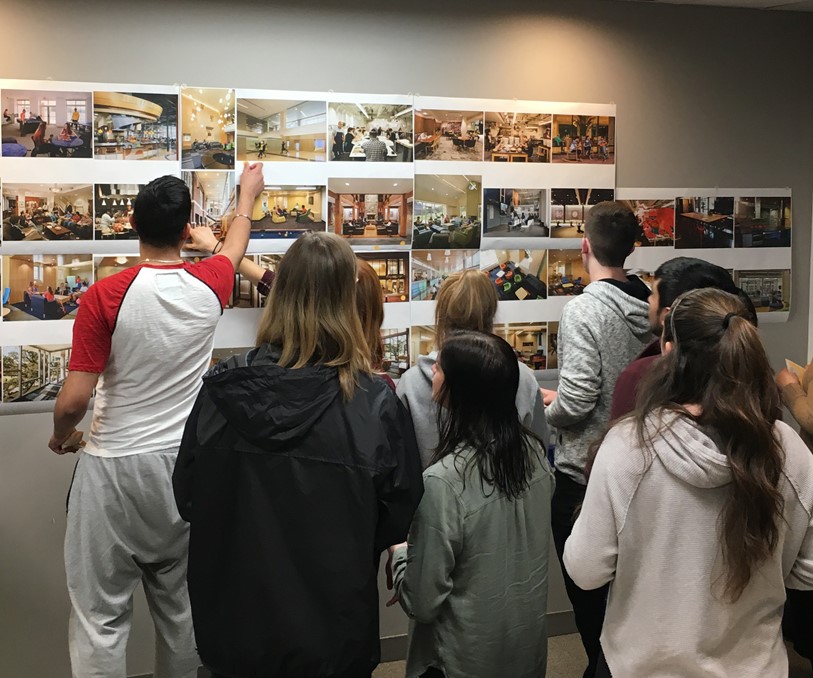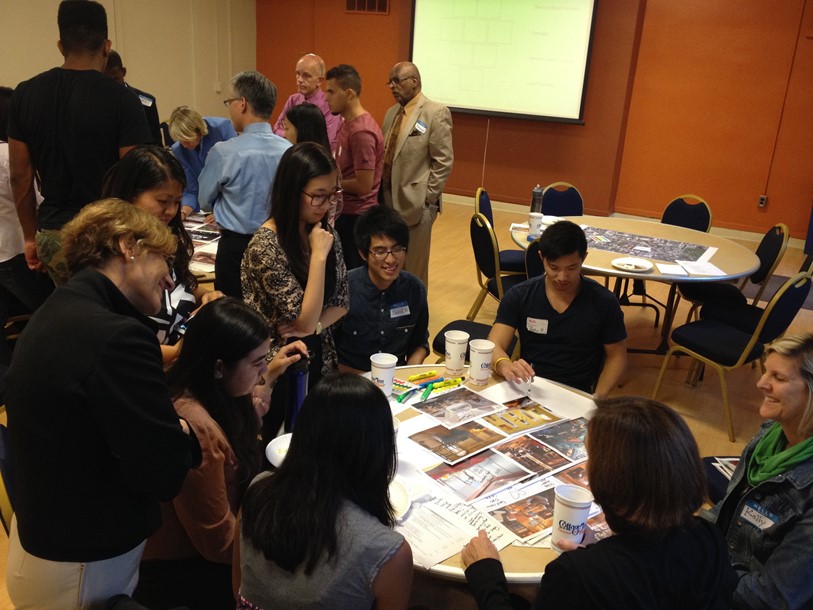When Interviewing Students, A Picture is Worth 1000 Words
Despite the diligent efforts of my high school Spanish teacher, I am still a single-language speaker. Luckily, over my 20 years working with students world-wide, I've discovered that effective communication is more than comprehension, it's about conveying ideas and concepts. For the purposes of planning and designing student communities, especially when English is a second language ... or a third ... or a fourth–images trump language.
Hanbury prioritizes interviewing students at the start of every project. As planners and designers, the essence of our work is to understand the end users’ (the students) aspirations. Obtaining good feedback in the early days of a project often sets the tone for future meetings. Whether for renovation or for new construction, creating spaces that will actually function as expected depends on predicting how they will be used. Until Star Trek-like virtual reality rooms are in our tool kit, visual programming exercises are our next best thing.
Hanbury has amassed a seemingly endless catalog of great photography over the course of working at more than 165 colleges and universities worldwide. We have photos of all kinds of spaces, both indoor and outdoor: building entry lobbies, living rooms, maker spaces, active learning classrooms, gaming lounges, large and small studies, community kitchens, courtyards, quads, plazas, etc. — spaces that are essential to the student experience on every campus. We use these photos either as a collage on the wall where students can view them all at once or use them as photo decks at tables with small groups of students.

Wall Exercise
For the wall exercise, students gather as a group in front of a collage of up to 40 images. We give each student three one-inch diameter sticky dots and ask them to think about the kinds of spaces they use every day. Any color will work, but my preference is red because it is easy to see from across the room. We give the students five minutes to each adhere a dot to no more than three images.
When everyone has made their choices, we focus on the images that have the most dots and ask students to tell us what about that space is important. I am always surprised by student reactions. They see beyond the innate attractiveness of the photo and go right to how they would use the space or how they would feel in that space. They often provide anecdotal stories of spaces on campus that they use but are missing key features that make them less effective.
Table Exercise
The table exercise is similar, but we break the larger group down to five to seven students per table. We give each table an identical pack of 10 to 12 images and ask them to organize them into pyramids with the most important image at the top. The group must negotiate with one another about prioritization. The end product is usually pretty amazing — often, some combination of the same five images will be at the top.
Students love these exercises! But getting students to show up to the event is the biggest hurdle. Pizza, chocolate chip cookies and soft drinks to be a universal draw, but a $10 gift card to the spirit store or local coffee shop could sweeten the deal.
Even when language is not a barrier, visual aids stimulate more powerful responses than questions. In typical question-and-answer interviews, students tend to sit passively and only a few really engage — especially if the group includes international students who are not as confident in their language skills. But visual programming events get all students working together. Our only disappointment is when we have to cut off the conversation to get ready for the next group to arrive.

